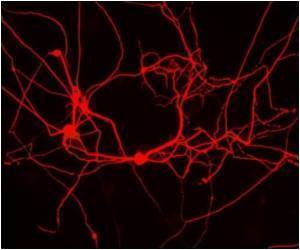How adult human stem cells would differentiate was correctly predicted within a day of culturing adult human stem cells on a new type of matrix by researchers at the University of Michigan.

Differentiation is the process of stem cells morphing into other types of cells. Understanding it is key to developing future stem cell-based regenerative therapies.
First author Jianping Fu, an assistant professor in mechanical engineering and biomedical engineering, said: "We show, for the first time, that we can predict stem cell differentiation as early as Day 1.
"Normally, it takes weeks or maybe longer to know how the stem cell will differentiate. Our work could speed up this lengthy process and could have important applications in drug screening and regenerative medicine. Our method could provide early indications of how the stem cells are differentiating and what the cell types they are becoming under a new drug treatment."
In this study, Fu and his colleagues examined stem cell mechanics, the slight forces the cells exert on the materials they are attached to. These traction forces were suspected to be involved in differentiation, but they have not been as widely studied as the chemical triggers. In this paper, the researchers show that the stiffness of the material on which stem cells are cultivated in a lab does, in fact, help to determine what type of cells they turn into.
Fu said: "Our research confirms that mechanical factors are as important as the chemical factors regulating differentiation. The mechanical aspects have, until now, been largely ignored by stem cell biologists."
The new scaffold resembles an ultrafine carpet of "microposts," hair-like projections made of the elastic polymer polydimethylsiloxane---a key component in Silly Putty, Fu said. By adjusting the height of the microposts, the researchers were able to adjust the rigidity of the matrix.
Once the researchers observed the cells differentiating according to the mechanical stiffness of the substrate, they decided to measure the cellular traction forces throughout the culturing process to see if they could predict how the cells would differentiate.
Using a technique called fluorescent microscopy, the researchers measured the bending of the microposts in order to quantify the traction forces.
"Our study shows that if the stem cells determine to differentiate into one cell type then their traction forces can be much greater than the ones that do not differentiate, or that differentiate into another cell type."
"We prove that we can use the evolution of the traction force as early indicators for stem cell differentiation."
The new matrix - manufactured through an inexpensive molding process - is so cheap to make that the researchers are giving it away to any interested scientists or engineers.
Fu said: "We think this toolset provides a newly accessible, practical methodology for the whole community."
Source-ANI
 MEDINDIA
MEDINDIA




 Email
Email





